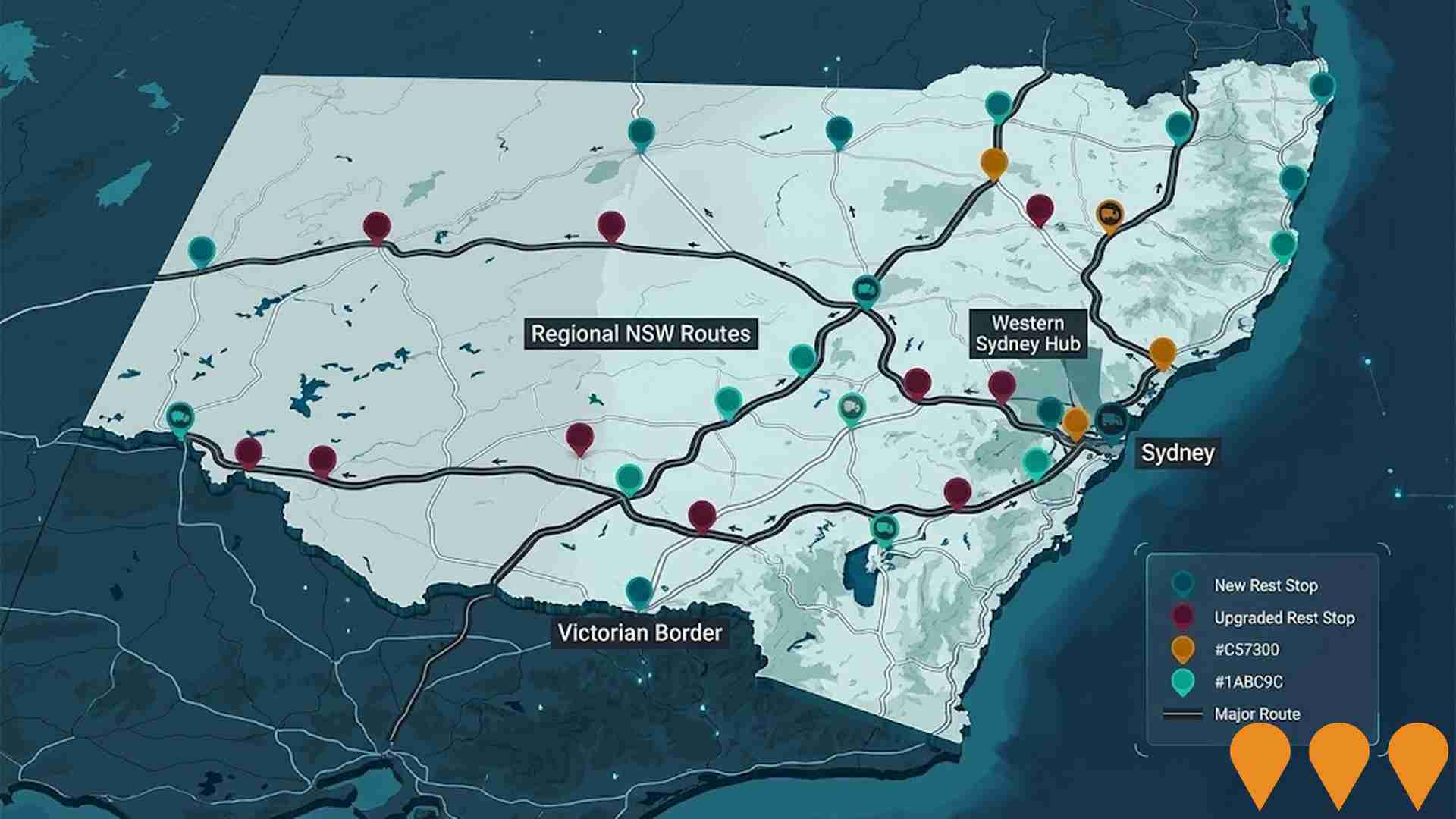Chart Color Schemes
est. as @ -- *
ABS ERP | -- people | --
2021 Census | -- people
Sales Activity
Curious about local property values? Filter the chart to assess the volume and appreciation (including resales) trends and regional comparisons, or scroll to the map below view this information at an individual property level.
Find a Recent Sale
Sales Detail
Population
Gowrie has shown very soft population growth performance across periods assessed by AreaSearch
Gowrie (ACT)'s population, as of Aug 2025, is approximately 3,096 people. This figure represents a decrease of 44 individuals since the 2021 Census, which recorded a population of 3,140 people. The change is inferred from ABS's estimated resident population of 3,096 in June 2024 and an additional 6 validated new addresses since the Census date. This results in a density ratio of 1,604 persons per square kilometer, which is higher than the average across national locations assessed by AreaSearch. While Gowrie experienced a 1.4% population decline since the census, the SA3 area showed a 0.2% growth, indicating differing population trends. Natural growth contributed approximately 73.9% of overall population gains in recent periods.
AreaSearch uses ABS/Geoscience Australia projections for each SA2 area, released in 2024 with a base year of 2022. For areas not covered by this data and years post-2032, age group growth rates from the ACT Government's SA2 area projections, using 2022 as a base, are adopted. Future population trends indicate an overall decline, with the area's population expected to reduce by 284 persons by 2041. However, specific age cohorts are anticipated to grow, notably the 75 to 84 age group, projected to increase by 55 people.
Frequently Asked Questions - Population
Development
The level of residential development activity in Gowrie is very low in comparison to the average area assessed nationally by AreaSearch
Gowrie has averaged approximately two new dwelling approvals annually over the past five financial years, totalling ten homes. As of FY26, zero approvals have been recorded. Between FY21 and FY25, an average of 1.1 new residents per year per dwelling constructed was observed. However, this figure increased to nine people per dwelling in the past two financial years, suggesting rising demand and tightening supply.
In FY26, $595,000 in commercial development approvals have been recorded, indicating Gowrie's residential nature. Compared to the Australian Capital Territory, Gowrie has a significantly lower building activity, 72.0% below the regional average per person. This scarcity of new dwellings typically enhances demand and prices for existing properties. Nationally, Gowrie's development activity is also below average, which could reflect the area's maturity or potential planning constraints.
Recent developments have consisted solely of standalone homes, preserving Gowrie's traditional suburban character with a focus on family homes. Given stable or declining population forecasts, Gowrie may experience reduced housing pressure, creating favourable conditions for buyers.
Frequently Asked Questions - Development
Infrastructure
Gowrie has moderate levels of nearby infrastructure activity, ranking in the top 50% nationally
Changes to local infrastructure significantly impact an area's performance. AreaSearch identified three projects that may affect this region: Wanniassa Hills Primary School Modernisation, Erindale Group Centre Master Plan Implementation - Stage 1, The Valley Ponds - Wanniassa, and Canberra Light Rail Stage 4 - Woden to Tuggeranong. The following list details those most relevant.
Professional plan users can use the search below to filter and access additional projects.
INFRASTRUCTURE SEARCH
 Denotes AI-based impression for illustrative purposes only, not to be taken as definitive under any circumstances. Please follow links and conduct other investigations from the project's source for actual imagery. Developers and project owners wishing us to use original imagery please Contact Us and we will do so.
Denotes AI-based impression for illustrative purposes only, not to be taken as definitive under any circumstances. Please follow links and conduct other investigations from the project's source for actual imagery. Developers and project owners wishing us to use original imagery please Contact Us and we will do so.
Frequently Asked Questions - Infrastructure
Low and Mid-Rise Housing Policy
State-wide NSW planning reforms via amendments to the State Environmental Planning Policy to enable more diverse low and mid-rise housing (dual occupancies, terraces, townhouses, manor houses and residential flat buildings up to 6 storeys) in well-located areas within 800 m of selected train, metro and light-rail stations and town centres. Stage 1 (dual occupancies in R2 zones statewide) commenced 1 July 2024. Stage 2 (mid-rise apartments, terraces and dual occupancies near stations) commenced 28 February 2025. Expected to facilitate up to 112,000 additional homes over the next five years.
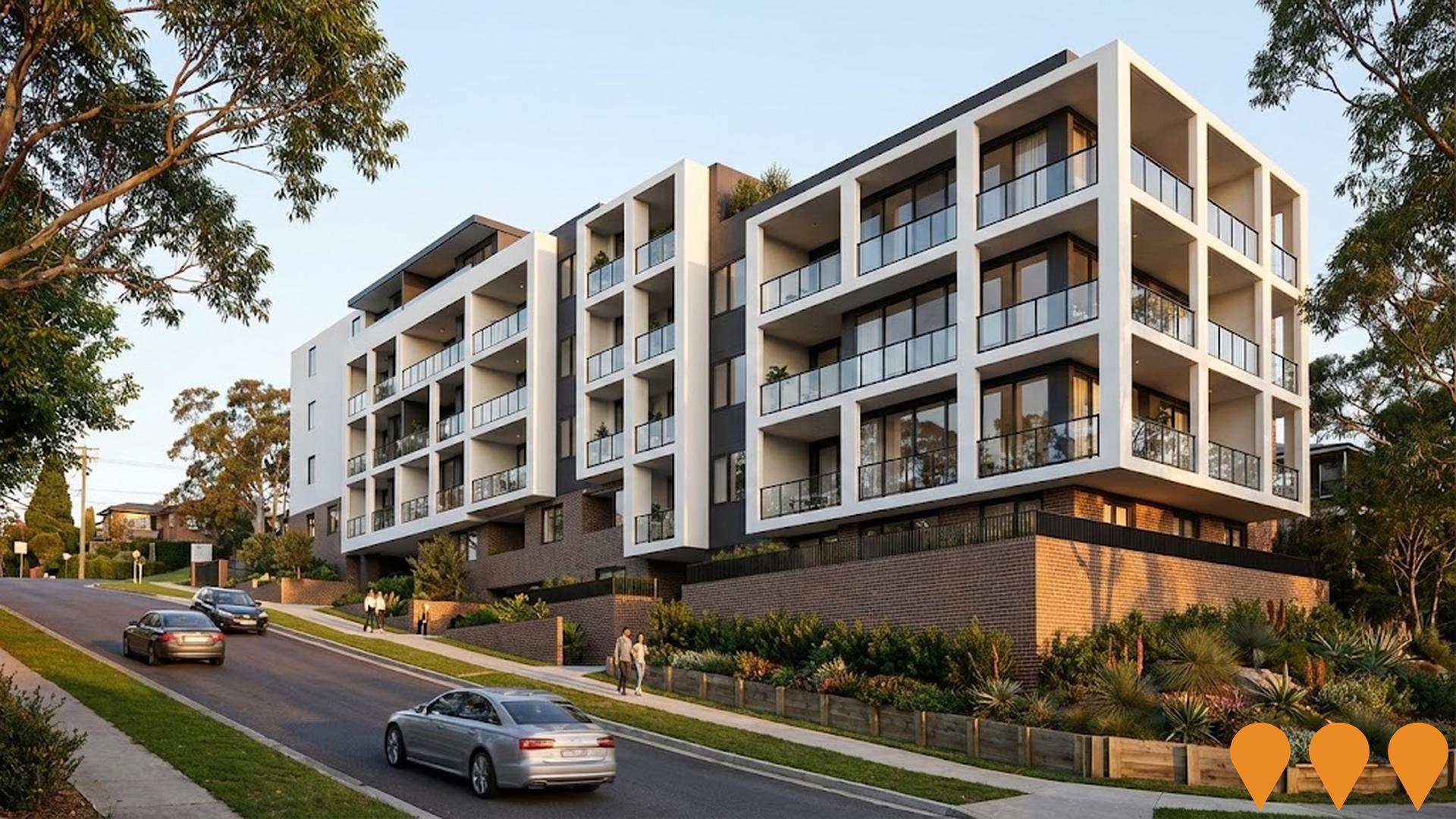
Canberra Light Rail Stage 4 - Woden to Tuggeranong
Proposed extension of Canberra's light rail network from Woden Town Centre south to Tuggeranong Town Centre via Mawson and the Athllon Drive corridor. This future stage aims to complete the north-south radial mass transit spine, connecting major residential, employment and activity centres while supporting bus, cycling, walking and private vehicle integration.
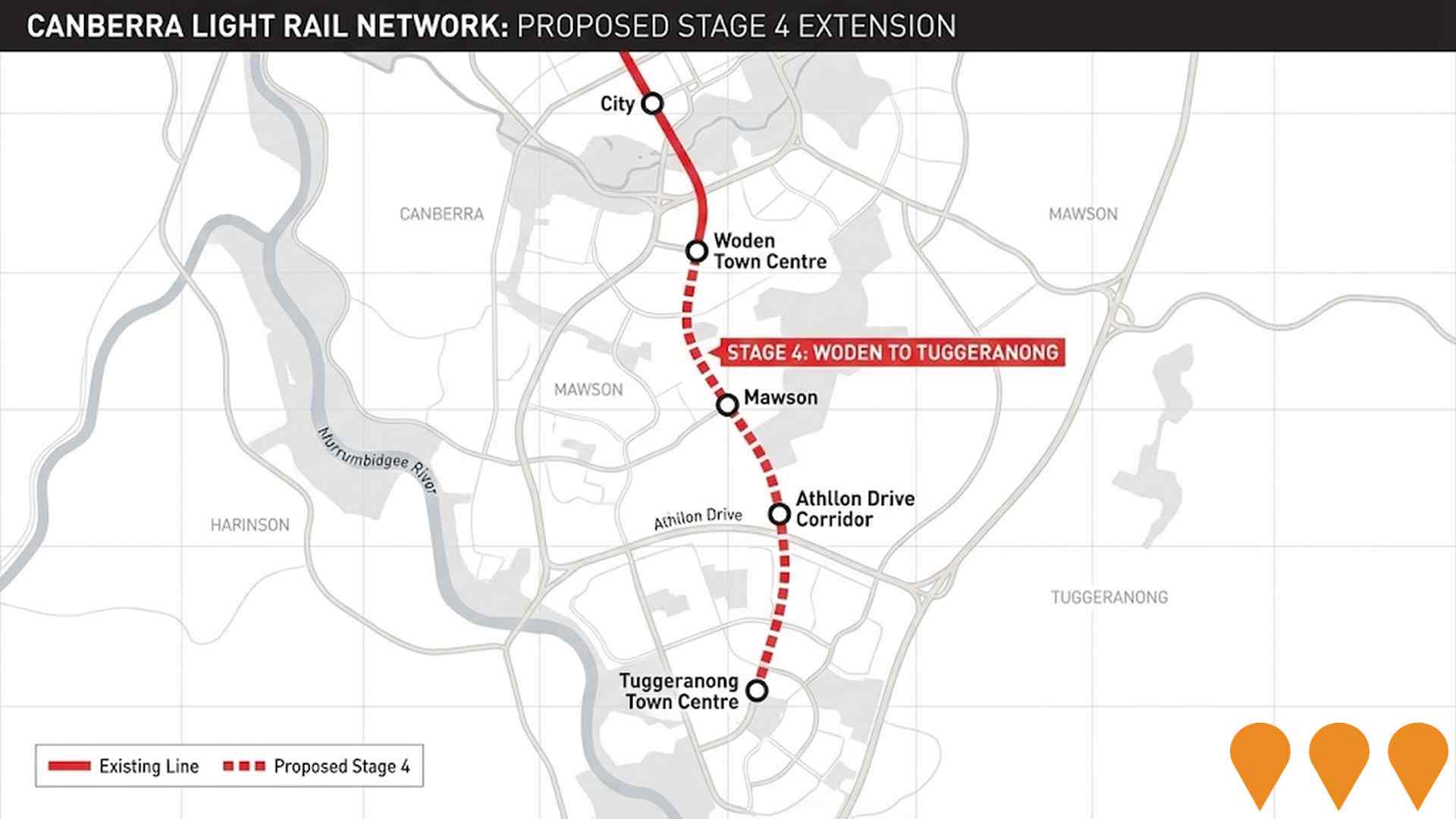
Erindale Group Centre Master Plan Implementation - Stage 1
Major revitalisation of the Erindale precinct including new community facilities, upgraded public realm, improved active travel links, and preparation for future mixed-use and residential development directly adjoining Wanniassa. The Erindale Group Centre master plan is a non-statutory document that outlines a vision to guide growth and development of the centre over the next 30 years.
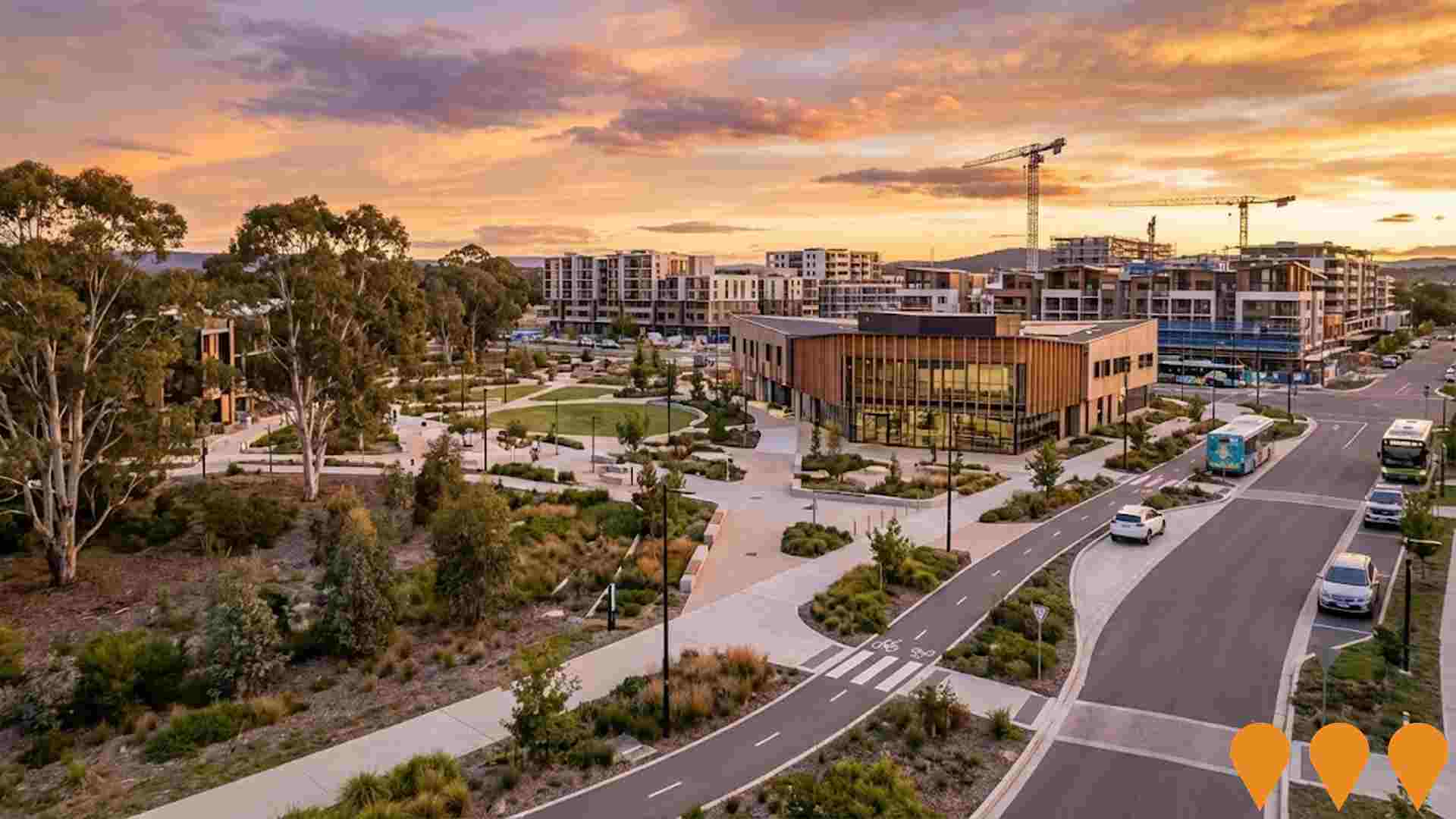
Enhanced bus and light rail corridors (Belconnen & Queanbeyan to Central Canberra)
ACT is progressing an integrated program to enhance high-frequency bus and future light rail corridors that link Belconnen and Queanbeyan with central Canberra. Light Rail Stage 2A (City to Commonwealth Park) commenced construction in early 2025 with services targeted from 2028, while planning and approvals continue for Stage 2B to Woden. The ACT Government has acknowledged and is planning upgrades for the Belconnen-to-City bus corridor as groundwork for a future east-west light rail Stage 3, and is coordinating cross-border public transport initiatives with NSW through the Queanbeyan Region Integrated Transport Plan and the ACT-NSW MoU for Regional Collaboration.
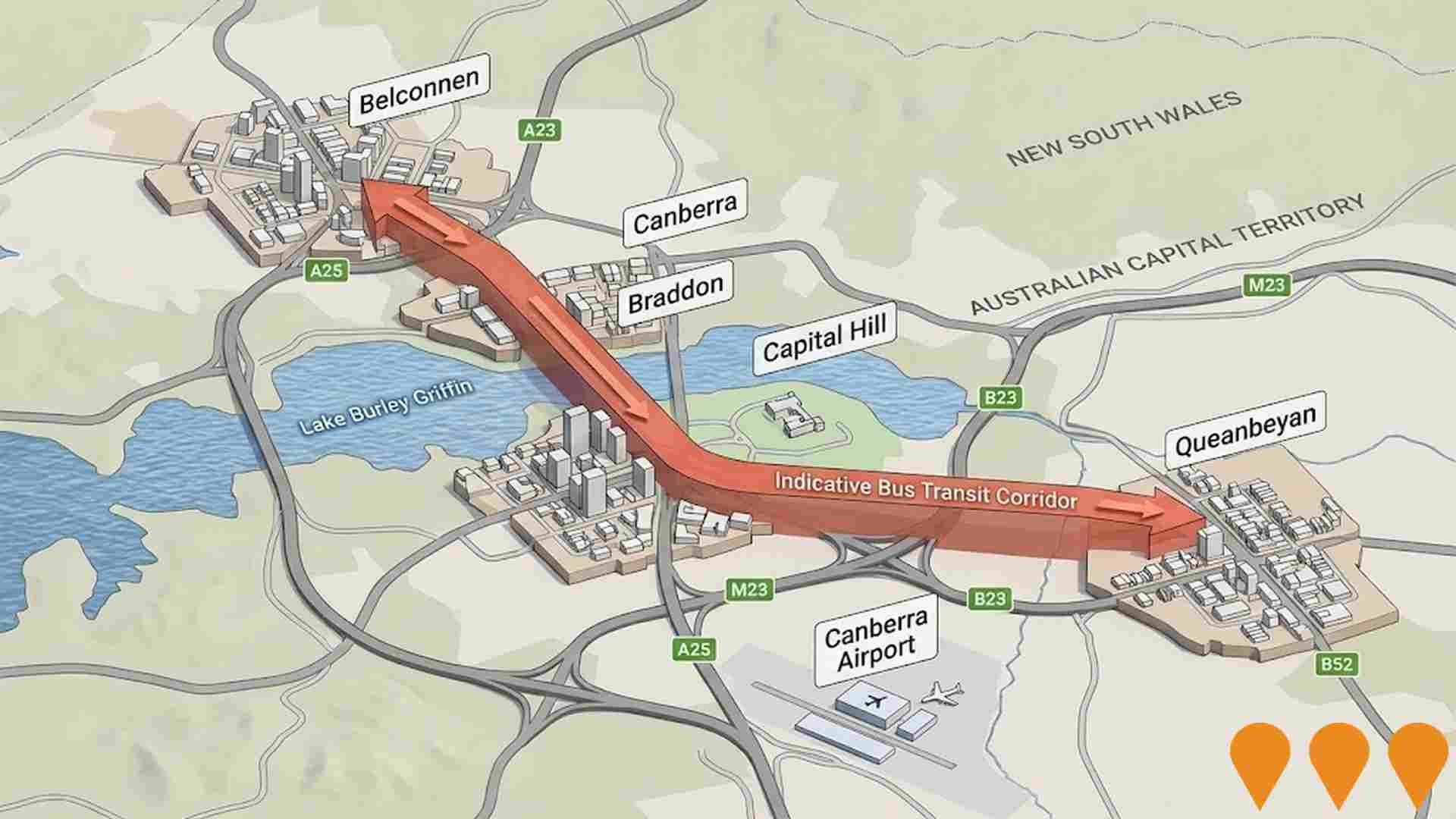
HumeLink
HumeLink is a new 500kV transmission line project connecting Wagga Wagga, Bannaby, and Maragle, spanning approximately 365 km. It includes new or upgraded infrastructure at four locations and aims to enhance the reliability and sustainability of the national electricity grid by increasing the integration of renewable energy sources such as wind and solar.
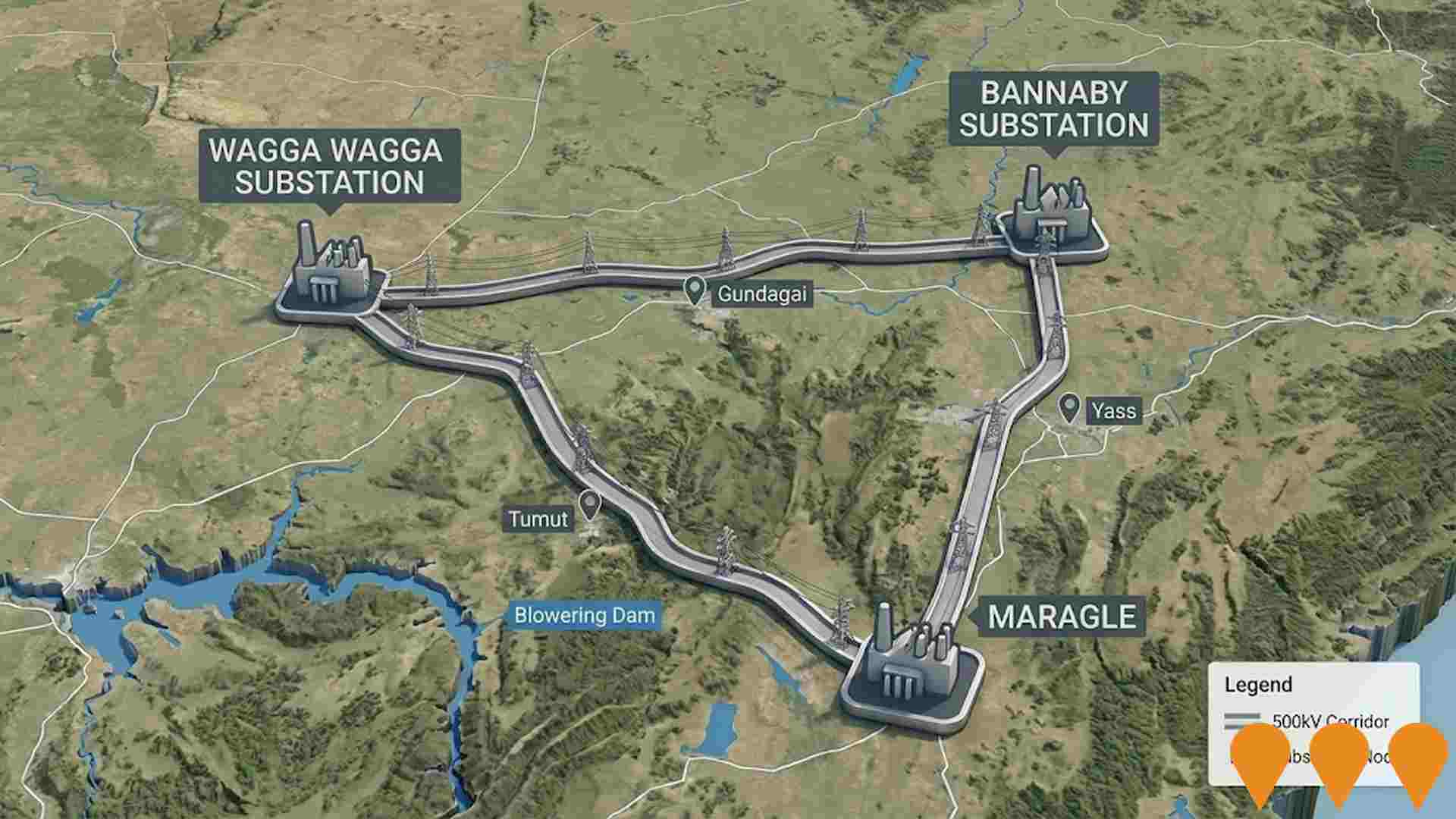
Queanbeyan Regional Integrated Transport Plan
Comprehensive transport planning initiative with 64 key actions for next 10 years. Addresses road safety, active transport connectivity, public transport availability, and future transport needs. Improved connections between Queanbeyan and ACT.
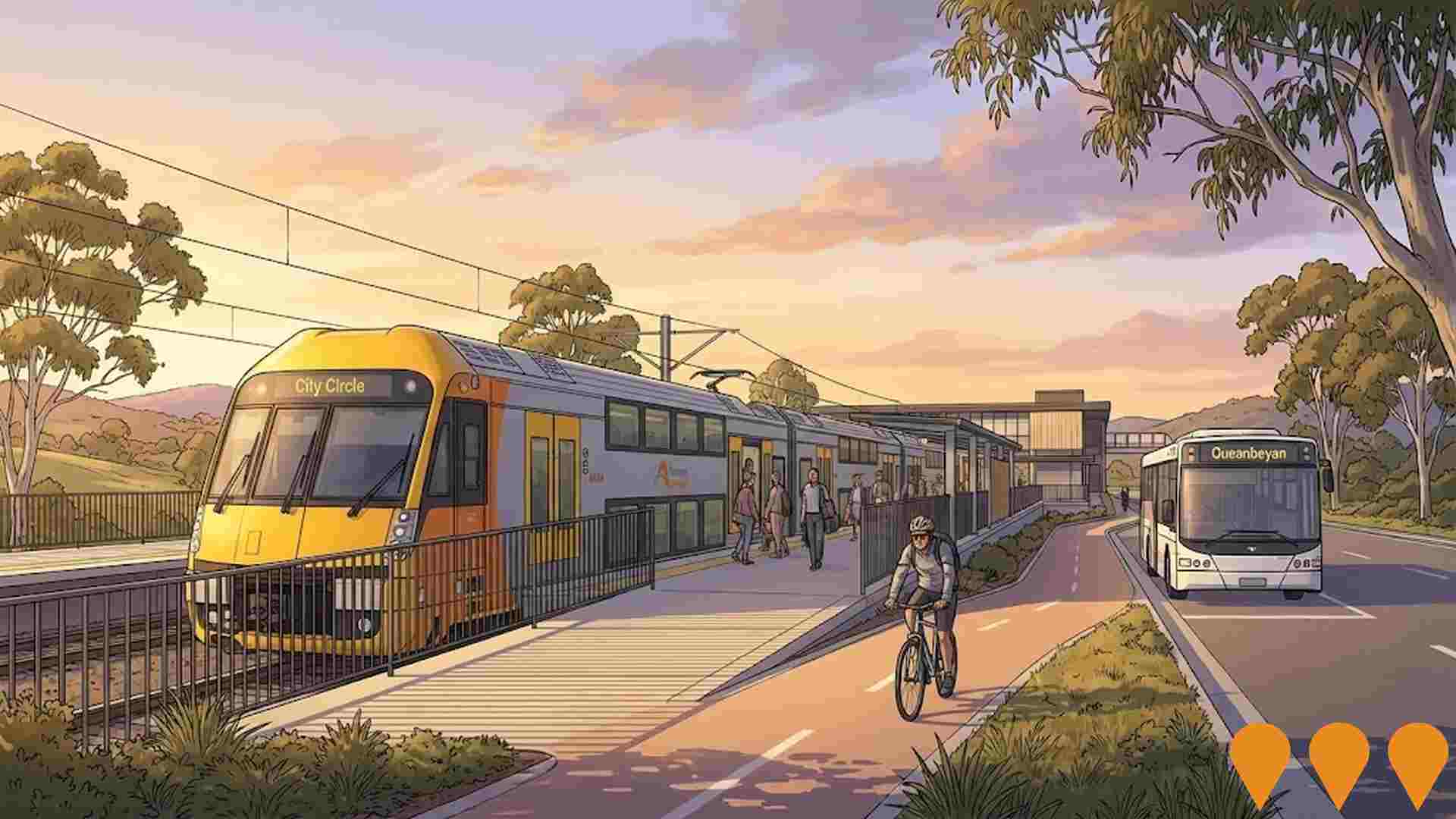
Big Canberra Battery (Williamsdale BESS)
A 250 MW / 500 MWh battery energy storage system at Williamsdale in southern Canberra, delivered by Eku Energy as Stream 1 of the ACT Government's Big Canberra Battery. Construction commenced in November 2024 with partners CPP and Tesla supplying Megapack systems. The asset will connect to Evoenergy's 132 kV network near the Williamsdale substation to provide two hours of dispatchable power, grid services and reliability for the ACT. Target operations in 2026.
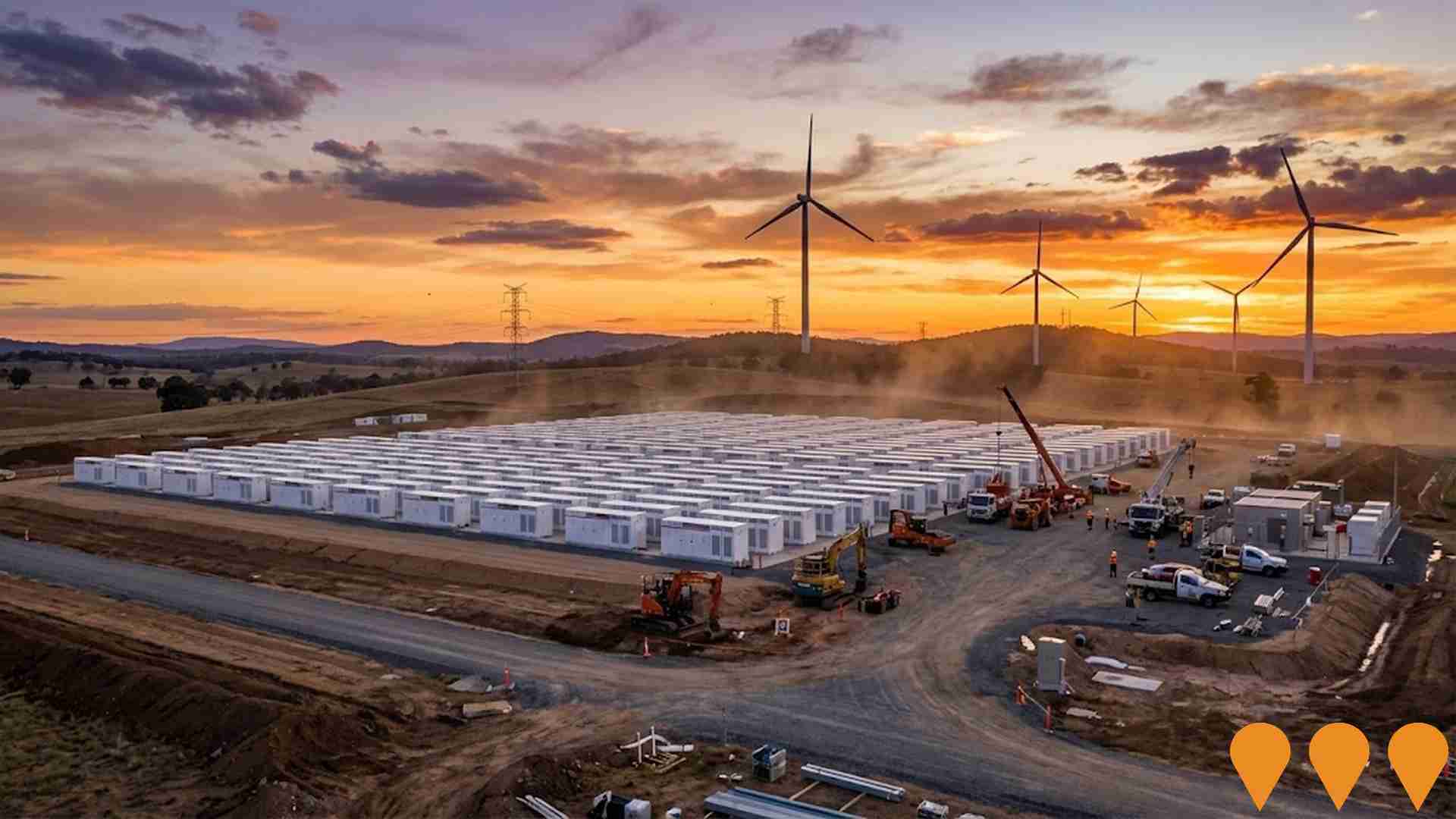
Wanniassa Hills Primary School Modernisation
Modernisation project for Wanniassa Hills Primary School, which includes upgrading the pre-school and replacing existing gas boilers with new electrical heat pumps to improve energy efficiency and thermal performance. The overall modernisation is focused on improving learning environments and building efficiency. The project previously included a major upgrade and modernisation of the primary school including new learning communities, administration refurbishment, hall upgrade and expanded parking and drop-off facilities.
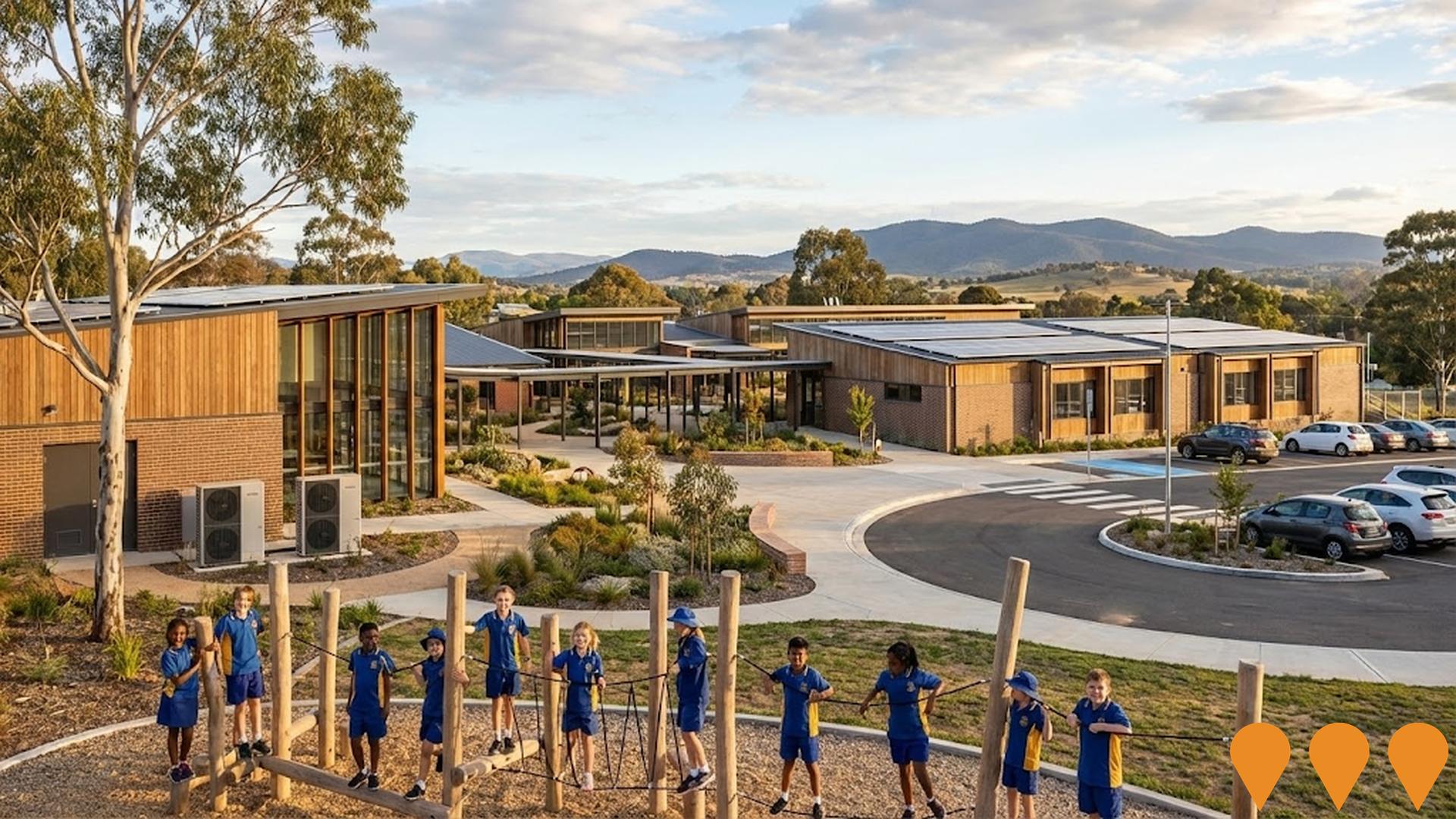
Employment
The labour market performance in Gowrie lags significantly behind most other regions nationally
Gowrie ACT has a well-educated workforce with prominent representation in essential services sectors. The unemployment rate as of June 2025 was 6.5%, with an estimated employment growth of 0.7% over the past year.
In June 2025, 1,590 residents were employed while the unemployment rate was 3.1% higher than the ACT's rate of 3.4%. Workforce participation in Gowrie was 66.5%, compared to the ACT's 69.6%. The leading employment industries among residents were public administration & safety, health care & social assistance, and education & training. Construction showed strong specialization with an employment share of 1.4 times the regional level.
However, professional & technical services were under-represented at 8.5% compared to the ACT's 11.1%. Employment opportunities locally appeared limited based on Census data. From June 2024 to June 2025, employment increased by 0.7%, while labour force grew by 1.7%, causing unemployment to rise by 0.9 percentage points. In contrast, ACT-wide employment rose by 1.9%, with a labour force growth of 1.6% and a decrease in unemployment by 0.3 percentage points. Jobs and Skills Australia's national employment forecasts from May 2025 project a 6.6% increase over five years and 13.7% over ten years. Applying these projections to Gowrie's employment mix suggests local growth of approximately 6.4% over five years and 13.2% over ten years, though these are simple extrapolations for illustrative purposes only.
Frequently Asked Questions - Employment
Income
The economic profile demonstrates exceptional strength, placing the area among the top 10% nationally based on comprehensive AreaSearch income analysis
Gowrie's median taxpayer income was $68,311 with an average of $79,768 according to AreaSearch's postcode level ATO data for the financial year 2022. This is significantly higher than the Australian Capital Territory's median income of $68,678 and average income of $83,634. Based on a 13.6% increase since the financial year 2022, current estimates suggest a median income of approximately $77,601 and an average income of $90,616 as of September 2025. In Gowrie, incomes rank highly nationally, with household, family, and personal incomes all between the 91st and 93rd percentiles according to Census 2021 data. Income distribution shows that 30.6% (947 people) earn between $1,500 - 2,999 weekly, similar to the broader area where 34.3% fall into this category. The district's affluence is evident with 43.1% earning over $3,000 per week, supporting premium retail and service offerings. After housing costs, residents retain 88.2% of their income, indicating strong purchasing power. Gowrie's SEIFA income ranking places it in the 8th decile.
Frequently Asked Questions - Income
Housing
Gowrie is characterized by a predominantly suburban housing profile, with above-average rates of outright home ownership
Dwelling structure in Gowrie, as per the latest Census, consisted of 99.3% houses and 0.7% other dwellings (semi-detached, apartments, 'other' dwellings). This compares to Australian Capital Territory's 79.6% houses and 20.4% other dwellings. Home ownership in Gowrie was at 35.2%, with mortgaged dwellings at 49.3% and rented ones at 15.5%. The median monthly mortgage repayment in the area was $2,167, higher than Australian Capital Territory's average of $2,000. The median weekly rent figure for Gowrie was $440, compared to Australian Capital Territory's $425. Nationally, Gowrie's mortgage repayments were significantly higher at $2,167 versus the Australian average of $1,863, and rents were substantially above the national figure of $375.
Frequently Asked Questions - Housing
Household Composition
Gowrie features high concentrations of family households, with a higher-than-average median household size
Family households constitute 82.4% of all households, including 38.7% couples with children, 31.0% couples without children, and 12.2% single parent families. Non-family households account for the remaining 17.6%, with lone person households at 15.5% and group households comprising 2.0%. The median household size is 2.8 people, larger than the Australian Capital Territory average of 2.6.
Frequently Asked Questions - Households
Local Schools & Education
Gowrie shows strong educational performance, ranking in the upper quartile nationally when assessed across multiple qualification and achievement indicators
The area's university qualification rate is 34.8%, substantially lower than the SA4 region average of 46.8%. This presents both a challenge and an opportunity for targeted educational initiatives. Bachelor degrees are the most common at 21.9%, followed by postgraduate qualifications (8.6%) and graduate diplomas (4.3%). Trade and technical skills are prominent, with 32.4% of residents aged 15+ holding vocational credentials – advanced diplomas (12.7%) and certificates (19.7%).
Educational participation is high, with 28.8% of residents currently enrolled in formal education. This includes 11.2% in primary education, 6.5% in secondary education, and 4.7% pursuing tertiary education. The area has two primary schools, Gowrie Primary School and Holy Family Primary School, serving a total of 855 students. These schools focus exclusively on primary education, with secondary options available in surrounding areas. The area functions as an education hub, offering 27.6 school places per 100 residents – significantly higher than the regional average of 14.9 – and attracts students from neighboring communities. The socio-educational conditions are above average, with an ICSEA score of 1057.
Frequently Asked Questions - Education
Schools Detail
Nearby Services & Amenities
Transport
Transport servicing is good compared to other areas nationally based on assessment of service frequency, route connectivity and accessibility
Gowrie has 25 active public transport stops, all of which are bus stops. These stops are served by eight different routes that together facilitate 806 weekly passenger trips. The accessibility of these transport services is rated as excellent, with residents on average being located just 165 meters from the nearest stop.
On a daily basis, there are an average of 115 trips across all routes, which translates to approximately 32 weekly trips per individual stop.
Frequently Asked Questions - Transport
Transport Stops Detail
Health
Health outcomes in Gowrie are marginally below the national average with common health conditions slightly more prevalent than average across both younger and older age cohorts
Gowrie's health indicators show below-average outcomes, with common health conditions slightly more prevalent than average across both younger and older age groups. The rate of private health cover is exceptionally high at approximately 59% of the total population (1,839 people), compared to 57.2% across Australian Capital Territory.
Mental health issues and asthma are the most common medical conditions in the area, impacting 9.7 and 8.4% of residents respectively. 66.0% of residents declare themselves completely clear of medical ailments, similar to the 66.1% across Australian Capital Territory. The area has 18.6% of residents aged 65 and over (576 people), which is higher than the 17.6% in Australian Capital Territory. Health outcomes among seniors are above average, performing even better than the general population in health metrics.
Frequently Asked Questions - Health
Cultural Diversity
The level of cultural diversity witnessed in Gowrie was found to be above average when compared nationally for a number of language and cultural background related metrics
Gowrie's cultural diversity was above average, with 20.8% of its population born overseas and 15.4% speaking a language other than English at home. Christianity was the predominant religion in Gowrie, comprising 50.5% of the population. Judaism, however, showed overrepresentation in Gowrie at 0.3%, compared to the Australian Capital Territory's average of 0.1%.
In terms of ancestry, the top three groups were Australian (27.1%), English (26.7%), and Irish (9.3%). Notably, Spanish (0.8% vs regional 0.7%), Russian (0.6% vs regional 0.3%), and Croatian (0.9% vs regional 0.8%) ethnic groups were overrepresented in Gowrie.
Frequently Asked Questions - Diversity
Age
Gowrie's population is slightly younger than the national pattern
Gowrie's median age is 38 years, which is higher than the Australian Capital Territory average of 35 but equivalent to the Australian median of 38. Compared to the Australian Capital Territory, Gowrie has a higher percentage of residents aged 65-74 (11.5%) but fewer residents aged 25-34 (11.7%). Between the 2021 Census and the present, the population aged 75-84 has grown from 4.3% to 6.0%, while the 35-44 age group increased from 14.5% to 16.0%. Conversely, the 25-34 age group has declined from 13.5% to 11.7%, and the 55-64 age group has dropped from 12.2% to 11.0%. Demographic projections suggest significant changes in Gowrie's age profile by 2041. The 75-84 age cohort is projected to grow by 20%, adding 37 residents to reach a total of 223. Residents aged 65 and above will drive 88% of population growth, highlighting demographic aging trends. Conversely, the 55-64 and 0-4 age cohorts are expected to experience population declines.

